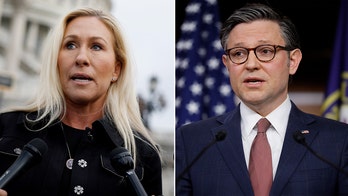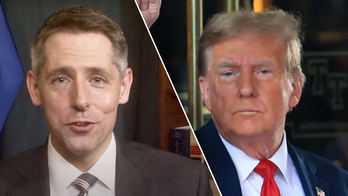As the newest class of Congress sweeps into Washington, C-SPAN is asking the presumptive Speaker of the House for expanded access to cover the new legislative body at work.
The cable network sent a letter to Rep. John Boehner on November 9, asking for permission to install its own cameras in the House chamber in order to more closely monitor floor proceedings and, they say, provide a more complete picture of the legislative process.
The current cameras in the House of Representatives are owned by the House itself and are the only cameras used to cover debates and other activities on the House floor. Networks like C-SPAN must use the video feed provided to them in order to cover the proceedings. Generally, the cameras stick to shots of politicians speaking at the podium, and occasional wider shots of the entire floor. In the letter, Brian Lamb, who heads the cable network, asked Boehner to allow the additional cameras in the same spirit that Boehner called for congressional debate on health care policy to be televised earlier this year.
"In January, you sent C-SPAN a letter supporting our request for televised access to the health care negotiations in which you wrote, 'Every issue of national import should be debated by the people's elected representatives in full public view,'" the letter reads. "You further wrote, 'Republicans have listened to the American people and are committed to making Congress more accountable to the people it serves.'
"Currently, House floor debates are not in full public view because private news media cameras are still not permitted in the House chamber. Rules established when the House installed its TV cameras in 1979 restrict congressional camera operators to head-on shots of members at the podium and committee tables and, they are prohibited from taking reaction shots or shots of the chamber, leaving viewers with a less-than-complete view of your debates."
The addition of private cameras, however, could lead to potential editorializing by the networks - by over- or under-covering certain procedures or politicians, for example. Some congressional members may worry about private conversations on the floor being picked up by microphones, or being caught on camera sleeping, Twittering, or generally not paying attention to the business at hand.
C-SPAN made the same request when then-Speaker Newt Gingrich assumed the leadership position in the House in 1994 - and when current Speaker Nancy Pelosi obtained the gavel in 2006. Both denied C-SPAN's request. Gingrich did allow, for a short time, a wider range of camera shots to be shown with the House cameras - mainly cutaways while members were speaking, interspersed with wider shots of the chamber. But amid a backlash from politicians on both sides of the aisle, furious at being caught on camera unaware, the House quickly reverted back to showing mainly podium shots.
C-SPAN offered to cover the costs for the installation and operations of the cameras - and also proposed making the feed available to accredited news organizations. Boehner is said to be weighing the offer.
"Rep. Boehner is committed to making the House more transparent and accountable," said Michael Steel, spokesperson for Boehner's office. "A number of media outlets, including C-SPAN, have requested the ability to install private cameras in the House chamber. While no decisions have been made at this time, these requests are under review."




